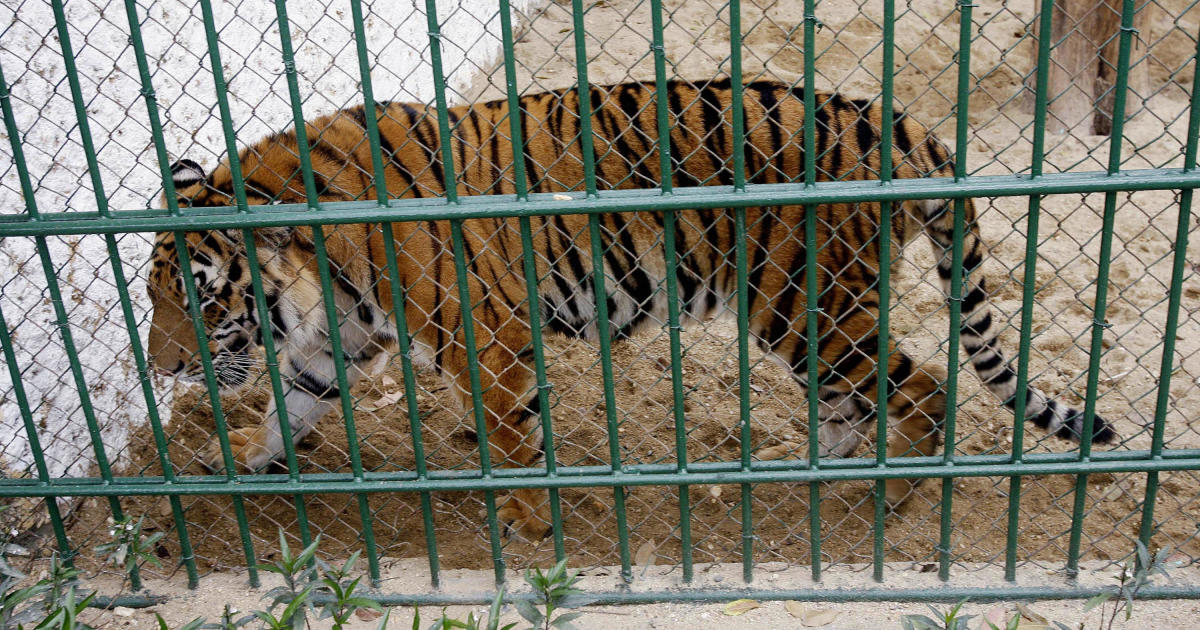The recent deaths of 51 big cats in Vietnamese zoos due to the H5N1 avian influenza virus highlight a concerning trend of zoonotic disease outbreaks. This tragic event underscores the interconnectedness of wildlife, domestic animals, and human health, demanding a comprehensive approach to prevention and mitigation strategies. The outbreak, affecting tigers, lions, and a panther, raises serious questions about biosecurity protocols in zoos, the potential for further spread, and the broader implications for conservation efforts. This situation warrants a deeper investigation into the origins of the outbreak, the effectiveness of current prevention measures, and the preparedness of the nation’s veterinary and public health systems to tackle similar future occurrences. The lack of immediate comment from the affected zoos further necessitates a transparent and collaborative investigation to address underlying vulnerabilities. The significance of this event extends beyond the immediate loss of wildlife; it signals a potential threat to public health and necessitates improved global collaboration on zoonotic disease surveillance.
The H5N1 Outbreak in Vietnamese Zoos
Details of the Outbreak
The outbreak, occurring in August and September 2023, resulted in the deaths of 47 tigers, three lions, and one panther across two zoos in southern Vietnam. The My Quynh safari park in Long An province and the Vuon Xoai zoo in Dong Nai province both experienced significant losses. Tests conducted by the National Centre for Animal Health Diagnosis confirmed the presence of the H5N1 avian influenza A virus as the cause of death. Notably, no zoo staff who were in close contact with the affected animals reported any respiratory symptoms, indicating perhaps a less readily transmissible mode of infection among the cats themselves or highlighting the limitations of our current understanding. The lack of a direct staff-animal transmission does not negate the threat. The possibility of indirect spread remains, requiring careful surveillance of animal and human health data.
Zoos and Wildlife Conservation Concerns
The incident raises serious concerns about biosecurity protocols within privately owned zoos in Vietnam. The Education for Nature Vietnam NGO reports that approximately 310 of the 385 tigers in captivity in the country are held in privately owned facilities. This underscores the need for stricter regulations and improved biosecurity standards across all facilities, regardless of ownership status. The potential for outbreaks of zoonotic diseases within privately-owned wildlife facilities necessitates more stringent regulatory oversight concerning quarantine procedures, staff training protocols and biosecurity technologies. Further investigation into existing standards and enforcement in Vietnamese zoos, particularly in private facilities, is essential. The high concentration of vulnerable species in captive settings raises significant health risks requiring thorough examination of zoo practices and animal health protocols to mitigate the probability of future similar outbreaks.
Zoonotic Diseases and Global Health Security
H5N1 and Mammals
The World Health Organization (WHO) has reported an increase in H5N1 outbreaks among mammals since 2022, emphasizing the virus’s expanding host range. While H5N1 infections in humans can range from mild to severe, some cases can be fatal. This highlights the inherent danger and constant monitoring needs for such viruses. A further examination of viral strain changes and potential adaptations for mammalian transmission needs to be done promptly to facilitate proactive measures for human and animal health. The transmission dynamics amongst affected mammalian species are uncertain. Investigating the interspecies transmission of the virus among felines within each zoo would contribute crucial information toward developing control strategies.
Spread and Mitigation
The spread of H5N1 from avian reservoirs to mammalian species, such as the big cats in the Vietnamese zoos, highlights the interconnectedness of ecosystems and the potential for zoonotic disease spillover. Understanding the pathways and mechanisms of transmission is crucial for developing effective mitigation strategies. Enhanced biosecurity measures, including strict hygiene protocols and vaccination programmes for vulnerable animal populations, become critically important. Efficient monitoring, rapid response plans, and international collaboration in surveillance are also key factors in preparedness, response, and containment. Further research concerning potential environmental spread, intermediate animal vectors and pathways for transmission from avian to mammalian hosts warrants critical investment to improve the preventative and mitigating capacities for global security.
Public Health Implications and Future Preparedness
Human Health Risks
Although no human cases have directly been linked to this particular outbreak, the potential for human infection from H5N1 remains. Continued monitoring of human populations near the affected zoos is essential. Robust public health surveillance systems are crucial to promptly detecting and managing any potential spillover events to people. Community education, especially concerning contact with wild or domestic animals exhibiting symptoms, is equally important in improving human resilience and facilitating the response. Public awareness concerning preventative measures against influenza viruses is beneficial and should include emphasis on contact with potentially-infected animals.
Lessons Learned and Future Steps
The deaths of these big cats underscore the importance of strengthening biosecurity measures in captive wildlife settings, improving surveillance systems for zoonotic diseases, and fostering international collaboration in pandemic preparedness. Investing in advanced diagnostics, conducting epidemiological investigations promptly, and enforcing higher standards of animal welfare would assist in future outbreaks. Continuous updates to risk assessment strategies, protocols, and operational changes within animal handling procedures are imperative to lessen health threats, bolster conservation measures and better support long-term biosecurity efforts. This requires strengthening national capacities for diagnostics, strengthening international collaboration and building institutional cooperation at various levels.
Take Away Points:
- The H5N1 outbreak in Vietnamese zoos highlights the risks of zoonotic diseases in captive wildlife.
- Improved biosecurity protocols, stricter regulations, and increased surveillance are needed in zoos, particularly private facilities.
- The interconnectedness of animal and human health necessitates a global collaborative approach to prevent and manage future outbreaks.
- Continued research into H5N1 transmission dynamics and enhanced public health measures are essential for mitigating future risks.
- International collaboration and information-sharing regarding emerging zoonotic diseases must remain prioritized for pandemic preparedness.




